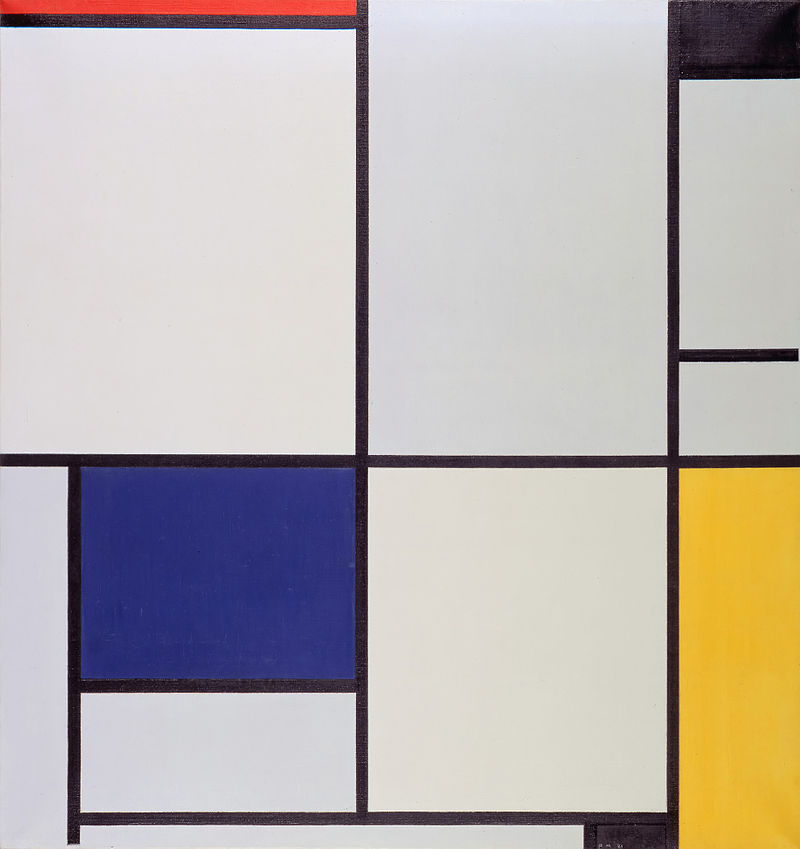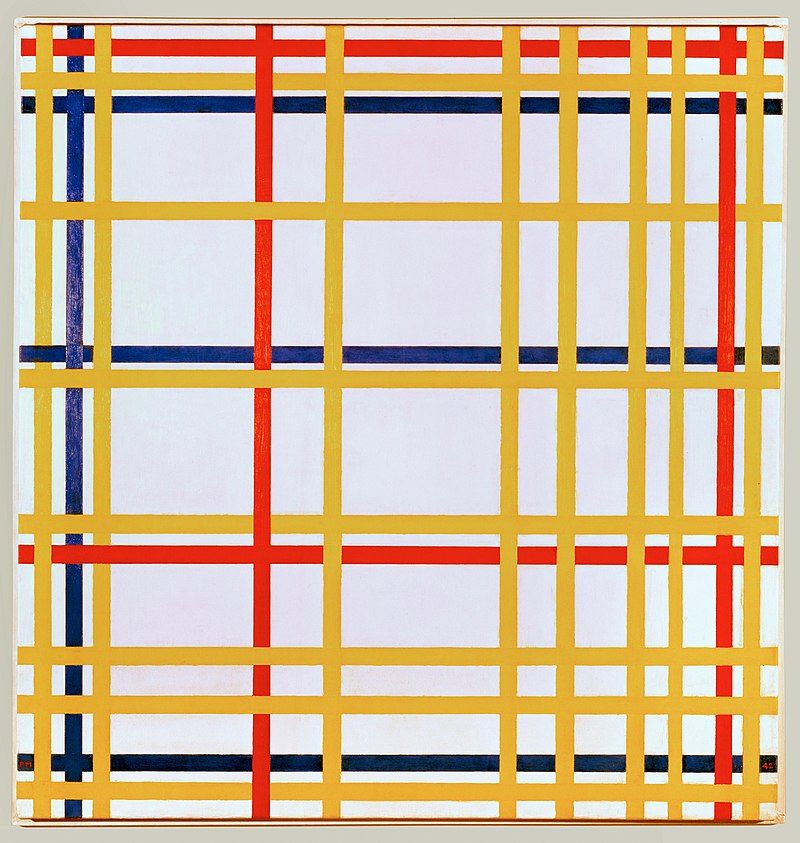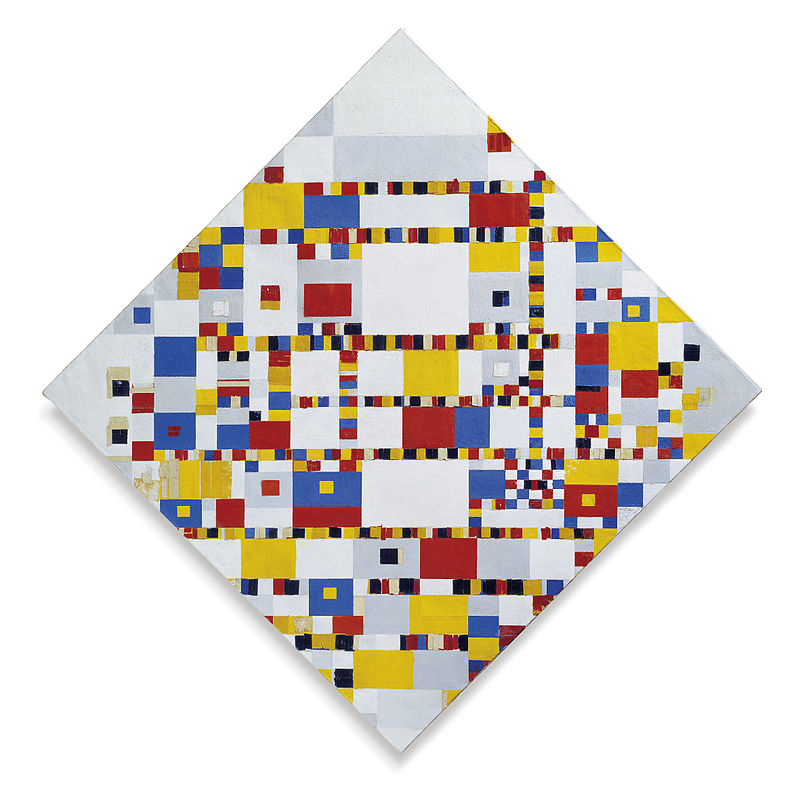
Tableau I, 1921, Kunstmuseum Den Haag
Piet Mondrian, a Dutch painter and one of the pioneers of abstract art, developed a distinctive philosophy on art that is often referred to as neoplasticism or the “De Stijl” movement. Mondrian’s philosophy was deeply rooted in his belief in the spiritual and transformative power of art. His ideas not only influenced his own work but also had a significant impact on the development of modern art as a whole.
Central to Mondrian’s philosophy was the idea that art should strive to achieve a universal harmony and order. He believed that through the use of abstract forms, colors, and lines, artists could express the fundamental principles of the universe and create a sense of balance and tranquility. Mondrian sought to distill the essence of reality into its purest form, removing any unnecessary elements and reducing everything to its essential geometric components.
For Mondrian, art was a means to transcend the physical world and access a higher spiritual realm. He believed that by simplifying and organizing the visual elements, artists could tap into a universal energy or truth that lay beneath the surface of appearances. He aimed to create a sense of dynamic equilibrium, where the tensions between opposing elements—such as horizontal and vertical lines, primary colors and neutrals—could be resolved.

New York City (1942), Paris, Centre Pompidou.
Mondrian’s artistic philosophy also emphasized the concept of “plasticity,” which referred to the dynamic relationship between elements within a composition. He believed that the interplay between positive and negative space, color contrasts, and the rhythmic arrangement of lines could generate a sense of movement and energy. This idea of plasticity reflected his belief in the interconnectedness and interdependence of all things.
In practice, Mondrian’s philosophy manifested in his iconic paintings featuring grids of black lines intersecting with blocks of primary colors. These compositions, often referred to as his “grid paintings” or “Compositions,” aimed to evoke a sense of harmony and equilibrium through the careful placement and balance of geometric forms. Mondrian’s use of primary colors—red, blue, and yellow—symbolized the fundamental elements of the universe, while the black lines represented the dynamic tension and structure.

Victory Boogie Woogie (1942–1944), Kunstmuseum Den Haag
Mondrian’s philosophy had a profound influence on the development of modern art and design. His ideas resonated with artists and designers who sought to break away from traditional representational forms and explore the potential of abstraction. The principles of neoplasticism and Mondrian’s emphasis on simplicity, balance, and harmony continue to inspire artists, architects, and designers to this day.
Overall, Piet Mondrian’s philosophy on art emphasized the pursuit of universal harmony, spiritual expression, and the reduction of visual elements to their essential forms. His work and ideas played a pivotal role in shaping the trajectory of modern art, and his legacy continues to be celebrated and studied by artists and art enthusiasts worldwide.
